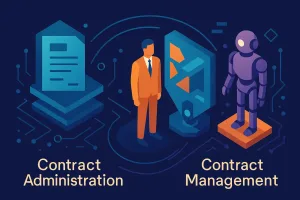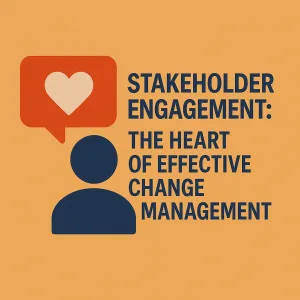Introduction to Agile Characteristics
Agile methodology has revolutionized project management by emphasizing flexibility, collaboration, and customer-centric approaches. At its core, Agile is a framework that promotes iterative development, allowing teams to respond to changes quickly and efficiently. The Agile Manifesto outlines four fundamental values and twelve guiding principles that prioritize individuals and interactions, working software, customer collaboration, and responsiveness to change. This methodology is particularly beneficial in dynamic environments where customer needs and market conditions can shift rapidly.
One of the defining characteristics of Agile is customer collaboration. Unlike traditional project management approaches that often rely on extensive upfront planning and documentation, Agile encourages continuous engagement with customers throughout the project lifecycle. This ongoing interaction fosters a deeper understanding of customer needs and expectations, enabling teams to adapt their strategies and deliverables accordingly.
The significance of customer feedback in Agile projects cannot be overstated. Regular feedback loops, facilitated through practices such as sprint reviews and retrospectives, allow teams to gather insights directly from stakeholders. This feedback is instrumental in shaping project direction, ensuring that the final product aligns closely with customer requirements and delivers real value. By actively involving customers in the development process, Agile teams can identify potential issues early, pivot when necessary, and ultimately enhance the quality and relevance of their outputs.
The Agile methodology, with its emphasis on customer collaboration, creates a framework where ongoing engagement and feedback are not just beneficial but essential. This approach not only improves project outcomes but also fosters stronger relationships between teams and stakeholders, leading to greater satisfaction and success in delivering products that truly meet customer needs.
The Role of Customer Collaboration in Agile
Customer collaboration is not just a beneficial practice; it is a fundamental characteristic that shapes the very essence of Agile methodologies. This section delves into how ongoing customer engagement influences project direction, ensuring that the final product aligns closely with user needs and expectations.
Emphasis on Customer Collaboration Over Contract Negotiation
The Agile Manifesto, a foundational document for Agile methodologies, explicitly prioritizes customer collaboration over contract negotiation. This principle underscores the belief that fostering a strong partnership with customers leads to better outcomes than rigidly adhering to contractual obligations. By engaging customers throughout the project lifecycle, teams can adapt to changing requirements and feedback, which is crucial in today’s fast-paced market. This flexibility allows for a more responsive approach to development, where customer insights directly inform project decisions and adjustments, ultimately enhancing product relevance and satisfaction.
Building Trust and Transparency Through Ongoing Communication
Ongoing communication with customers is vital for building trust and transparency. Regular interactions, such as sprint reviews and feedback sessions, create opportunities for stakeholders to voice their opinions and concerns. This continuous dialogue not only helps in clarifying expectations but also fosters a sense of ownership among customers. When customers feel heard and valued, they are more likely to engage positively with the project, leading to a collaborative atmosphere where ideas can flourish. Trust built through consistent communication can also mitigate risks, as potential issues are identified and addressed early in the development process.
Impact of Customer Involvement on Project Scope and Priorities
Customer involvement significantly impacts project scope and priorities. Agile methodologies encourage teams to remain adaptable, allowing for changes in project direction based on customer feedback. This responsiveness means that as customers provide insights into their needs and preferences, project teams can recalibrate their focus to ensure that the most valuable features are prioritized. For instance, if a customer identifies a critical functionality that was not initially considered, Agile teams can pivot to incorporate this feedback, ensuring that the final product delivers maximum value. This iterative process not only enhances the product but also aligns it more closely with market demands, ultimately leading to greater customer satisfaction.
Customer collaboration is integral to the Agile process, shaping project direction through continuous engagement, trust-building communication, and adaptive prioritization. For product owners and stakeholders, embracing this collaborative spirit is essential for driving successful Agile projects that meet and exceed customer expectations. By prioritizing customer feedback, Agile teams can navigate the complexities of project management with agility and precision, ensuring that the end product is not only functional but also truly resonates with its users.
Feedback Loops: Mechanisms of Customer Engagement
In Agile project management, customer collaboration is not just a phase; it is a continuous process that significantly influences the direction and success of a project. By actively engaging customers throughout the project lifecycle, teams can gather valuable insights that shape product development. This section explores various methods of gathering and utilizing customer feedback, emphasizing the importance of feedback loops in Agile methodologies.
Techniques for Gathering Customer Feedback
- User Stories: User stories are concise, simple descriptions of a feature from the perspective of the end user. They help teams understand user needs and prioritize features that deliver the most value. By involving customers in the creation of user stories, teams can ensure that the product aligns with user expectations and requirements. This technique fosters a shared understanding between stakeholders and the development team, enhancing collaboration and clarity.
- Sprint Reviews: Sprint reviews are held at the end of each sprint to showcase completed work to stakeholders, including customers. This meeting provides an opportunity for customers to provide immediate feedback on the product increment. By demonstrating the product in its current state, teams can gather insights on what works well and what needs improvement. This iterative feedback mechanism allows for quick adjustments, ensuring that the project remains aligned with customer needs.
- Retrospectives: Retrospectives are reflective meetings that occur at the end of each sprint, where the team discusses what went well, what didn’t, and how processes can be improved. While primarily focused on team dynamics and processes, retrospectives can also include customer feedback on the product. By analyzing customer input alongside team performance, organizations can identify areas for enhancement and foster a culture of continuous improvement.
The Importance of Continuous Feedback Loops
Continuous feedback loops are essential in Agile project management as they enable teams to identify issues early and adapt quickly. By regularly soliciting feedback from customers, teams can:
- Detect Problems Early: Early identification of issues allows teams to address them before they escalate, reducing the risk of costly rework later in the project.
- Adapt to Changing Needs: Agile projects thrive on flexibility. Continuous feedback ensures that teams can pivot and adjust their strategies based on evolving customer requirements and market conditions.
- Enhance Product Quality: Regular input from customers leads to a product that better meets user needs, ultimately resulting in higher satisfaction and fewer defects.
The Role of Customer Personas
Customer personas are fictional representations of target users based on research and data. They play a crucial role in aligning project goals with user needs by:
- Guiding Decision-Making: Personas help teams understand the motivations, pain points, and behaviors of their users, allowing for more informed decision-making throughout the project.
- Fostering Empathy: By keeping customer personas in mind, teams can cultivate empathy for users, ensuring that the product development process remains user-centric.
- Aligning Features with User Needs: Personas help prioritize features that resonate with the target audience, ensuring that the project delivers maximum value to its users.
Effective customer engagement through feedback loops is a cornerstone of Agile project management. By employing techniques such as user stories, sprint reviews, and retrospectives, teams can harness customer insights to drive project success. Continuous feedback not only helps in identifying issues early but also ensures that the product evolves in alignment with user needs, ultimately leading to a more successful outcome for all stakeholders involved.
Best Practices for Customer Collaboration in Agile Projects
- Establish Clear Communication Channels: Ensure that there are multiple avenues for customers to provide feedback, such as surveys, interviews, and user testing sessions.
- Prioritize Feedback: Not all feedback is equal; prioritize insights that align with project goals and user needs.
- Iterate Based on Insights: Use customer feedback to inform iterative cycles, making adjustments to the product as necessary.
- Celebrate Successes: Share successes derived from customer feedback with the team to reinforce the value of collaboration.
Challenges in Customer Collaboration
Customer collaboration is pivotal for ensuring that the project aligns with user needs and expectations. However, engaging customers effectively can present several challenges that may hinder the project’s success. Here are some common obstacles and strategies to overcome them:
Common Obstacles
- Unclear Communication: One of the primary challenges in customer collaboration is the potential for miscommunication. When project teams and customers do not share a common understanding of goals, requirements, or feedback mechanisms, it can lead to confusion and misalignment. This often results in wasted resources and time as teams may work on features that do not meet customer needs.
- Lack of Customer Availability: Customers may not always be available for regular check-ins or feedback sessions due to their own commitments. This can create gaps in communication and delay the project’s progress, as timely feedback is essential for making necessary adjustments.
- Resistance to Feedback: Some stakeholders or customers may be hesitant to provide feedback, either due to a lack of confidence in their opinions or fear of criticism. This reluctance can stifle valuable insights that could enhance the project.
Overcoming Resistance
- Building Trust: Establishing a trusting relationship with customers is crucial. This can be achieved by demonstrating transparency in the project process and showing that their feedback is valued and will be acted upon. Regular updates and open lines of communication can help foster this trust.
- Encouraging Participation: Actively encourage customers to participate in feedback sessions by highlighting the benefits of their input. This can be done through workshops, surveys, or informal discussions that emphasize how their insights can shape the project’s direction.
- Creating a Safe Environment: To alleviate fears around providing feedback, create an environment where customers feel safe to express their thoughts without judgment. This can involve framing feedback as a collaborative effort aimed at improving the product rather than as a critique of their ideas.
Setting Clear Expectations
- Defining the Feedback Process: It is essential to set clear expectations regarding how and when feedback will be collected. This includes outlining the methods of communication, the frequency of feedback sessions, and the specific areas where customer input is most needed. By clarifying these aspects, customers can better prepare for their involvement.
- Establishing Feedback Guidelines: Providing guidelines on how to give constructive feedback can also be beneficial. This can include tips on being specific, focusing on outcomes, and suggesting alternatives. Clear guidelines help customers understand how to contribute effectively, making the feedback process more productive.
- Regular Check-ins: Schedule regular check-ins to review progress and solicit feedback. This not only keeps customers engaged but also reinforces the importance of their input throughout the project lifecycle. Consistent engagement helps to maintain momentum and ensures that customer needs are continuously addressed.
While customer collaboration in Agile projects is essential, it is not without its challenges. By recognizing common obstacles, actively working to overcome resistance, and setting clear expectations for the feedback process, product owners and stakeholders can enhance customer engagement and ultimately drive project success.
Strategies to Enhance Customer Collaboration
In Agile project management, customer collaboration is not just a phase; it is a continuous process that significantly influences the direction and success of a project. Engaging customers throughout the project lifecycle ensures that their needs and feedback are integrated into the development process, leading to a product that truly meets their expectations. Here are some actionable strategies to enhance customer collaboration in Agile projects:
1. Utilize Effective Tools and Platforms
To facilitate seamless communication and feedback collection, consider implementing the following tools:
- Collaboration Software: Platforms like Slack, Microsoft Teams, or Trello can help maintain ongoing conversations and updates. These tools allow for real-time communication and can be integrated with project management software to keep everyone aligned.
- Feedback Collection Tools: Use tools such as SurveyMonkey or Typeform to gather structured feedback from customers. These platforms enable you to create surveys that can be easily shared and analyzed, ensuring that customer insights are captured effectively.
- Prototyping Tools: Tools like Figma or InVision allow customers to interact with prototypes, providing immediate feedback on design and functionality. This hands-on approach can lead to more meaningful insights and quicker iterations.
2. Schedule Regular Check-Ins and Updates
Establishing a routine for check-ins and updates is crucial for maintaining customer engagement. Here are some best practices:
- Weekly or Bi-Weekly Meetings: Schedule regular meetings with customers to discuss progress, gather feedback, and address any concerns. This not only keeps customers informed but also reinforces their role as active participants in the project.
- Sprint Reviews: At the end of each sprint, hold a review session where customers can see the work completed and provide feedback. This iterative approach allows for adjustments based on customer input before moving forward.
- Progress Reports: Send out regular updates via email or project management tools to keep customers informed about milestones, challenges, and next steps. Transparency builds trust and encourages ongoing collaboration.
3. Foster a Culture of Open Communication and Responsiveness
Creating an environment where customers feel comfortable sharing their thoughts and feedback is essential for successful collaboration. Here are some strategies to promote this culture:
- Encourage Honest Feedback: Make it clear to customers that their honest feedback is valued and essential for the project’s success. Create a safe space for them to express concerns or suggestions without fear of negative repercussions.
- Be Responsive: Ensure that your team is responsive to customer inquiries and feedback. Acknowledge their input promptly and demonstrate how it will be incorporated into the project. This responsiveness reinforces the importance of their contributions.
- Empower Customer Advocates: Identify key customer representatives who can act as advocates within their organizations. Empower them to share insights and feedback on behalf of their teams, ensuring that a broader range of perspectives is considered.
By implementing these strategies, product owners and stakeholders can significantly enhance customer collaboration in Agile projects. This ongoing engagement not only shapes the project direction but also fosters a sense of ownership and satisfaction among customers, ultimately leading to a more successful outcome.
Conclusion: The Future of Agile Projects with Customer Collaboration
The significance of customer collaboration cannot be overstated. Agile methodologies thrive on the principle of continuous feedback, which not only shapes the direction of projects but also enhances the overall quality of the deliverables. Here are some key insights that highlight the importance of ongoing customer engagement in Agile projects:
- Driving Project Success Through Feedback: Customer feedback is a cornerstone of Agile practices. It allows teams to adapt and pivot based on real user experiences and needs. By actively seeking and incorporating feedback, project teams can ensure that the final product aligns closely with customer expectations, leading to higher satisfaction and better outcomes. This iterative process fosters a culture of responsiveness and flexibility, essential traits in today’s fast-paced market.
- Embracing Agile Characteristics for Improved Outcomes: Stakeholders are encouraged to fully embrace Agile characteristics such as collaboration, adaptability, and transparency. These traits not only facilitate better communication between teams and customers but also empower stakeholders to make informed decisions throughout the project lifecycle. By fostering an environment where feedback is valued and acted upon, organizations can significantly enhance their project delivery and innovation capabilities.
- Prioritizing Customer Collaboration: As we look to the future of Agile projects, it is imperative for product owners and stakeholders to prioritize customer collaboration. This means not only engaging customers during the initial phases of a project but maintaining an ongoing dialogue throughout the development process. By doing so, teams can continuously refine their approach, ensuring that the end product not only meets but exceeds customer expectations.
The future of Agile projects hinges on the strength of customer collaboration. By recognizing the vital role that feedback plays in shaping project direction, stakeholders can drive their teams toward greater success. Embracing Agile principles and fostering a culture of continuous engagement will not only enhance project outcomes but also build lasting relationships with customers, ultimately leading to sustained business growth.
Find out more about Shaun Stoltz https://www.shaunstoltz.com/about/.
This post was written by an AI and reviewed/edited by a human.



